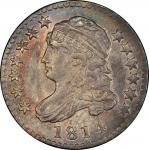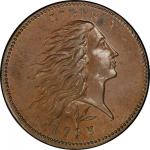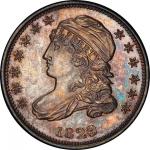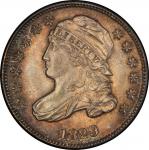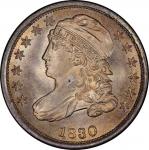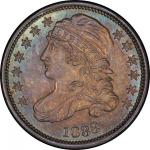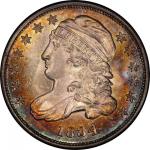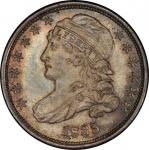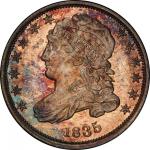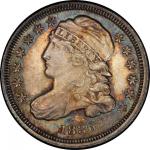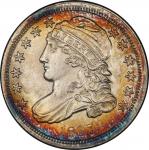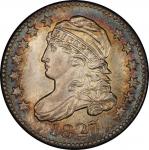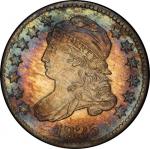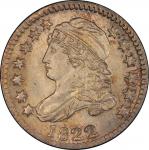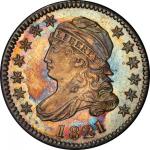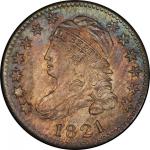“Note on the 1828 JR-1, the old style reverse with 101 denticles is combined with the small date obverse.” — Allen F. Lovejoy and William L. Subjack, “Early Dimes, 1796-1837,” American Numismatic Society, 1986 A boldly reflective specimen of the debut year of the modified type, this dime is bright and brilliant on both sides. The newly rendered style ameliorated the common issues with localized softness, leaving this piece and most of the Small Diameter type extremely sharp and well defined. The curl above the drapery clasp is a bit flat, as is the back of the eagle’s neck, but other details show remarkable improvement. The dies have clashed, leaving a wing outline behind Liberty’s hair, along with a vestige of the motto ribbon under the bust truncation and part of the other wing’s outline above her bust and under her nose. On the reverse, frosty reminders of the die clash are seen among the denomination and arrowheads, under each wing, above the wing at left, and above the head. Lapping lines are seen under careful examination, vertically oriented and more evident on the reverse than obverse. This specimen shows a scattering of fine contact points, each trivial but perhaps more visible because of the surface reflectivity. A few fine hairlines are present, and a single spot is noted below star 13. The reverse die is cracked from the right base of E in UNITED to the upper left corner of the motto ribbon. At the 1986 American Numismatic Society Coinage of the Americas Conference, two of the five authors of Early United States Dimes 1796-1837, Allen F. Lovejoy and William L. Subjack, discussed some technical aspects of the dime series they had been studying for decades. Among the topics covered in their wide-ranging paper was the transition from the so-called “large diameter” dimes to the “small diameter” type, a change that had more to do with the way dies were made and the sorts of collars being used than the actual size of the coins, which remained about the same. The year 1828, Lovejoy and Subjack wrote, was “the first of two transition years” when Engraver William Kneass “introduced his design changes one by one.” This die variety, 1828 JR-1, is a prime example, combining a new style Small Date obverse with “a leftover John Reich style reverse with widely spaced dentils,” as described in the JR book. This reverse die has engendered a mystery though: do the cracks that always appear on this reverse mean that there is a still-undiscovered earlier use of this die? Cracks can happen at any stage of a die’s life, including sinking and hardening, so the presence of die cracks does not prove the presence of an earlier marriage, but that possibility exists nonetheless. The other variety struck in 1828 combines an old-style Large Date obverse with a new reverse with small denticles. This specimen is among top half dozen seen by PCGS, a number that may not represent as many individual coins. Certified as MS-65 before its 2002 auction appearance, it remains a nearly unimproveable example of this fascinating variety. PCGS# 38826.



